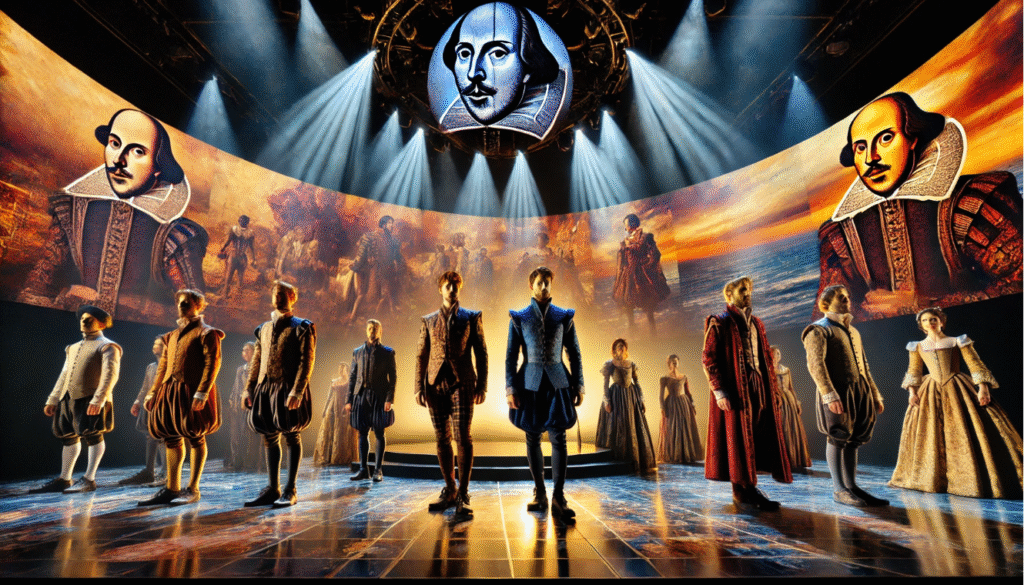
Unveiling the Evolution of Shakespeare’s Theatrical Legacy: How His Influence Continues to Shape Modern Theater
For centuries, Shakespeare’s works have shaped the world of theater. But have you ever wondered how the evolution of Shakespeare’s theatrical legacy still impacts modern productions today? From the Globe Theatre to Broadway, his influence continues to be seen on stages worldwide, influencing playwrights, actors, and directors. 🎭
In this article, we’ll dive into how Shakespeare’s revolutionary approaches to storytelling, character development, and dramatic techniques have left a lasting mark on contemporary theater. Whether you’re an aspiring playwright, an actor, or simply a theater enthusiast, understanding this evolution can offer invaluable insights into how his timeless works are still relevant and impactful. Get ready to discover how the Bard’s legacy lives on and drives modern theater forward!
Table of Contents
Toggle1: The Origins of Shakespeare’s Theatrical Legacy
William Shakespeare didn’t just write plays—he transformed the very way we think about theater. His legacy, deeply embedded in the foundations of modern theater, continues to influence how stories are told on stage today. But how did this all begin? 🤔
Shakespeare’s Rise in the Elizabethan Era: A Theater Revolution 🎭
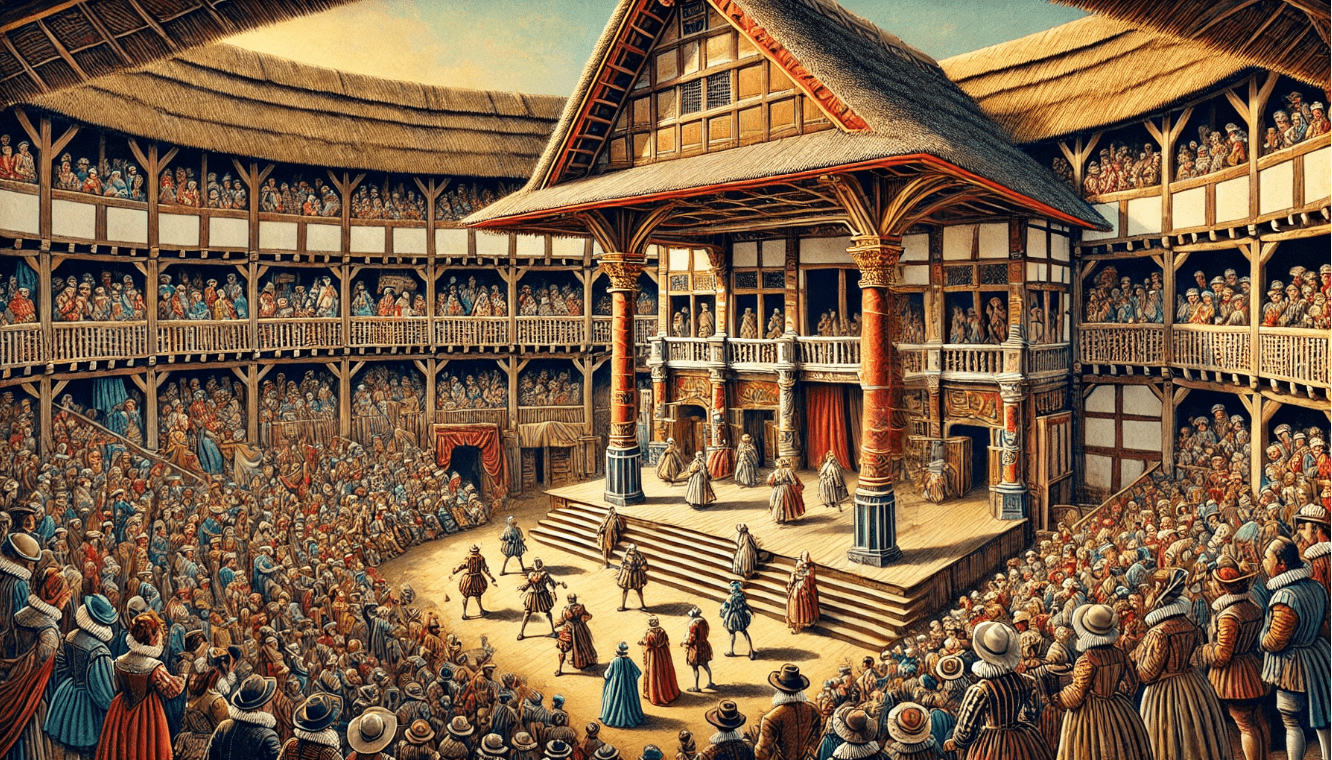
In the late 16th century, when Shakespeare first emerged, English theater was far from the grand performances we know today. Plays were often performed in smaller, less sophisticated settings. But Shakespeare, with his talent for weaving universal themes and engaging characters, changed everything. His plays weren’t just for the upper class; they spoke to everyone.
Shakespeare’s unique ability to mix drama, comedy, and tragedy in one play set him apart. He didn’t just entertain—he made his audience think, feel, and reflect on the human experience. This approach would lay the groundwork for the diverse styles we see in modern theater.
Key Innovations in Staging and Performance 🎬
Shakespeare wasn’t just a playwright; he was also involved in the staging of his works. His deep understanding of the physical space of the Globe Theatre allowed him to create plays that used every inch of the stage to draw the audience in. He revolutionized theatrical staging by incorporating minimal set designs, relying instead on vivid language to paint scenes in the audience’s imagination.
His plays, such as Hamlet and Macbeth, used elaborate dialogue and soliloquies to pull audiences into the psyche of the characters. This technique is still used today to create emotionally charged moments that connect performers with the audience on a deeper level.
The Globe Theatre: A Symbol of Change 🏛️
One of Shakespeare’s greatest contributions was his involvement in the creation of the Globe Theatre. This iconic structure, where many of his plays were first performed, changed the landscape of theater. Unlike earlier venues, the Globe was built to bring large audiences together in an open-air setting, encouraging an interactive and lively environment.
The architecture itself, designed for flexibility, allowed for rapid scene changes, enabling a flow of performances that could seamlessly jump between different worlds and ideas. This layout has influenced how modern theaters approach the design of their spaces today.
Shakespeare’s Signature Theatrical Elements ✨
- Universal Themes: Shakespeare’s plays dealt with themes like love, jealousy, ambition, and power. These are the very same themes that still drive modern theater today. The ability to tap into universal human emotions is one reason why his work continues to resonate across centuries.
- Complex Characters: Shakespeare created multi-dimensional characters who weren’t just heroes or villains. They were real people with flaws, desires, and contradictions. Think of Hamlet’s indecisiveness or Lady Macbeth’s descent into madness—these complexities continue to influence how playwrights develop characters today.
- Language and Wordplay: Perhaps Shakespeare’s most famous gift to theater is his language. He had an incredible way with words, using puns, metaphors, and poetic devices to add depth to his plays. Today, playwrights still use his wordplay as a model to craft dialogue that feels rich and layered.
2: Shakespeare’s Influence on Modern Theater Practices
Shakespeare didn’t just change theater in his own time—his influence is still felt in the practices of modern theater today. From the way plays are written to how actors perform and directors approach staging, Shakespeare’s fingerprints are all over contemporary theater. 🎭 Let’s dive into how his legacy continues to shape modern theater practices.
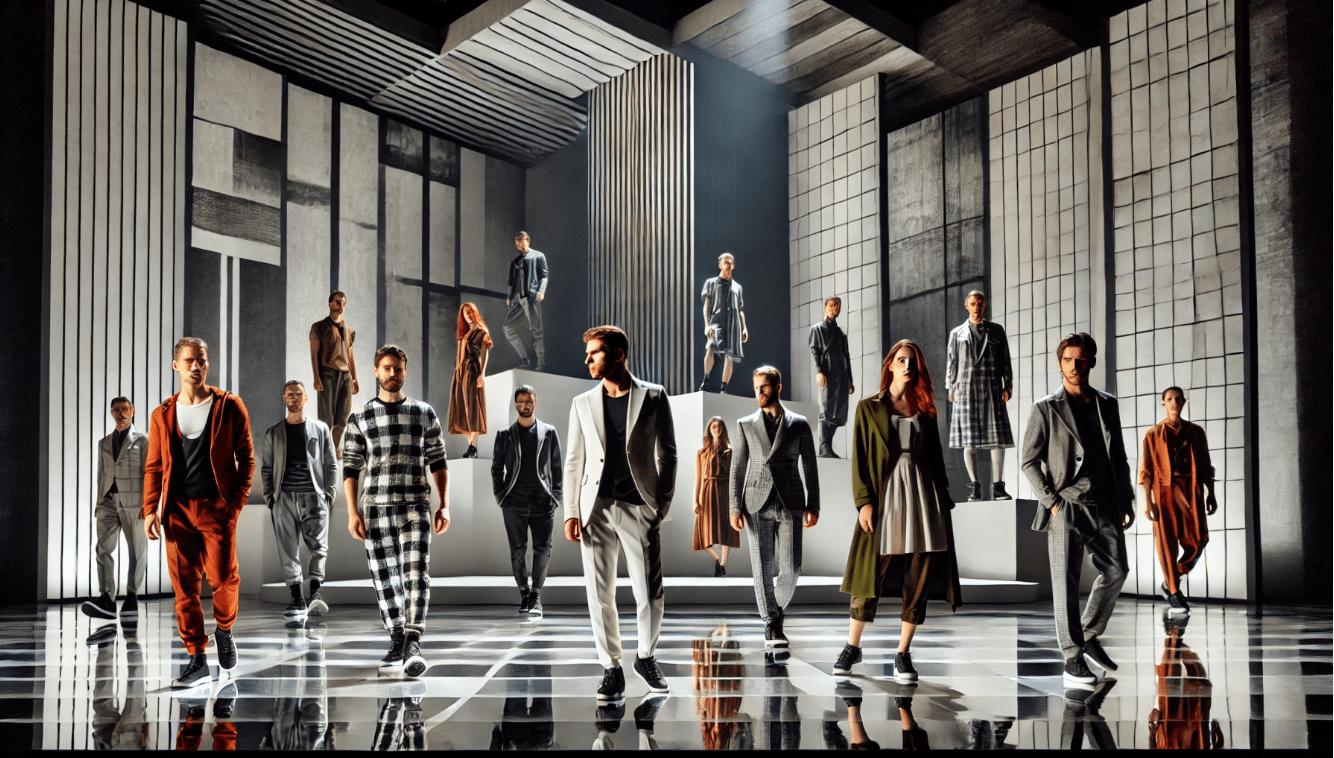
1. Direct Influences: What Today’s Playwrights Borrow from Shakespeare ✍️
Shakespeare’s writing was revolutionary, and many modern playwrights still draw inspiration from his work. Here’s how his legacy impacts contemporary writing:
- Storytelling Structure: Shakespeare’s use of a five-act structure has influenced modern plays. Many contemporary playwrights still follow this formula to create tension, build narratives, and resolve conflicts. His pacing—carefully measured through each act—teaches modern writers how to keep an audience engaged from start to finish.
- Complex Characters: Shakespeare’s characters are multi-layered, and this depth is a model for today’s playwrights. Think of Hamlet’s internal struggles or Othello’s jealousy—these characters are more than just good or bad. Modern plays still explore the complexity of human emotions, often inspired by Shakespeare’s vivid portrayals.
- Themes That Transcend Time: The universal themes in Shakespeare’s work—love, betrayal, ambition, and revenge—continue to dominate modern theater. Playwrights today often revisit these themes, adapting them to address current social issues and personal struggles.
2. Shakespeare’s Legacy in Theater Productions 🎬
Shakespeare’s influence isn’t limited to just writing. His ideas about how theater should be performed and staged have profoundly affected how productions are created today.
- Revival of Shakespeare’s Works: Modern adaptations of Shakespeare’s plays are everywhere, but they don’t always stick to the original setting or context. Directors often set his plays in modern times, like West Side Story, which is a retelling of Romeo and Juliet, or the Macbeth adaptations set in war-torn landscapes. These modern twists bring Shakespeare’s timeless stories to life in new and exciting ways.
- Innovative Staging: Shakespeare’s minimalistic staging—where the story and characters, rather than elaborate sets, drive the performance—continues to influence how theaters approach design. Today’s theater uses technology and creative lighting to transport audiences to different worlds, just as Shakespeare used vivid language and imaginative description to create the setting in the minds of his audience.
- Costume and Set Design Influence: Modern productions often take inspiration from Shakespeare’s focus on striking costumes and versatile sets. The costumes in many contemporary plays help portray the character’s emotional and psychological state, a tradition that started with Shakespeare’s symbolic use of dress and appearance.
3. Shakespeare’s Impact on Acting Styles 🎤
When it comes to acting, Shakespeare’s influence is undeniable. His writing offers actors the chance to explore deep emotional layers, and modern acting techniques still draw heavily from his work.
- Soliloquies and Monologues: Shakespeare’s use of soliloquies—characters speaking directly to the audience to reveal their inner thoughts—remains a cornerstone of modern acting. This technique creates a direct connection between the actor and the audience, allowing performers to express complex emotions and motivations.
- Emotional Depth: Shakespeare’s characters are deeply emotional, with flaws, contradictions, and intense desires. Modern actors often train to perform with the same depth, bringing out the nuances of their characters’ internal conflicts, as seen in Shakespeare’s heroes and villains.
- Engaging the Audience: Shakespeare was a master at engaging the audience, whether through humor, drama, or breaking the fourth wall. Modern actors still use these techniques to connect with audiences on a personal level, drawing them into the emotional world of the play.
4. Shakespearean Influence in Modern Playwriting and Directing ✨
- Influence on Modern Playwrights: Writers like Tom Stoppard (Rosencrantz and Guildenstern Are Dead) and Lin-Manuel Miranda (Hamilton) have acknowledged Shakespeare’s influence. They borrow from his ability to blend tragedy and comedy, his love for wordplay, and his approach to dynamic character relationships.
- Directorial Vision: Modern directors often experiment with Shakespeare’s works, infusing them with new interpretations while preserving his core themes. Directors today balance tradition and innovation—honoring Shakespeare’s timeless narrative while adding contemporary flair to make the stories resonate with modern audiences.
3: The Impact of Shakespeare on Modern Theater Audiences
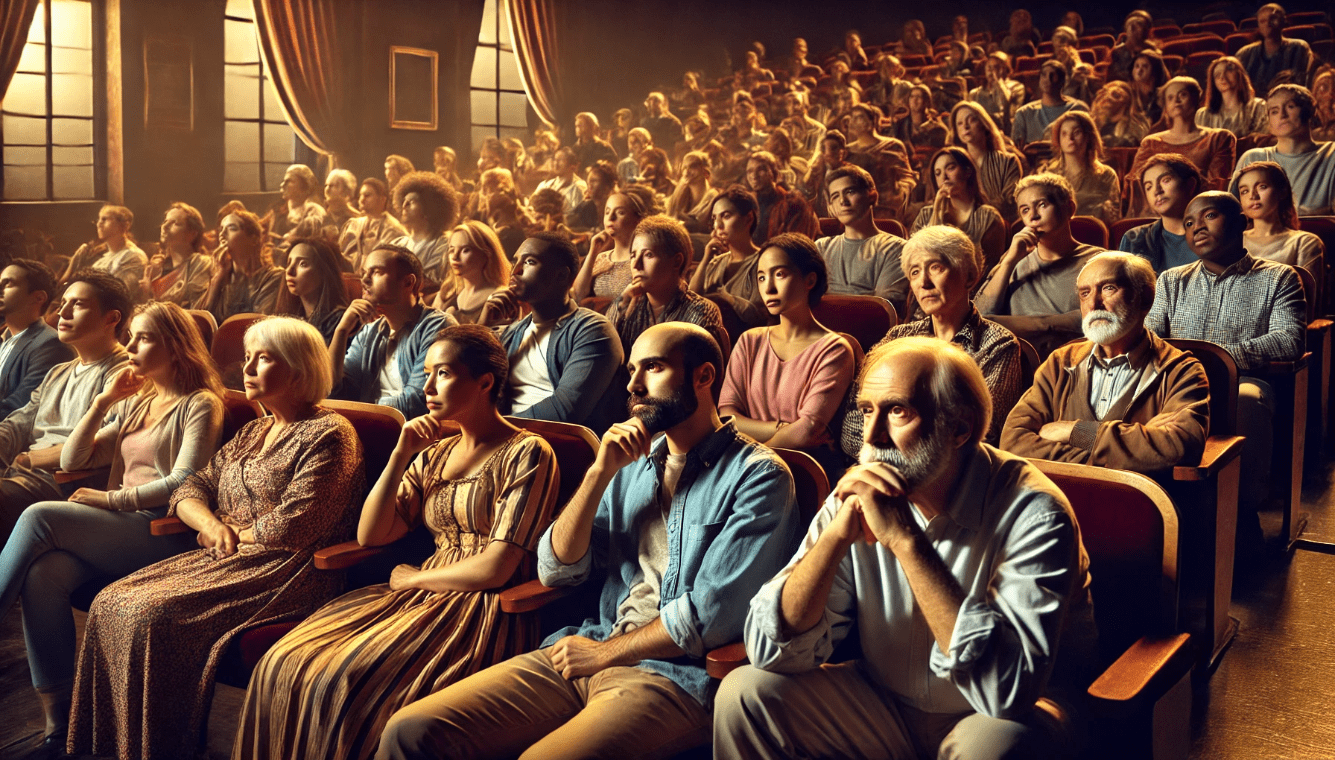
Shakespeare’s influence on modern theater goes beyond the stage and actors—it extends to how we, the audience, experience and connect with theater today. From engaging with timeless themes to adapting performances for a contemporary audience, Shakespeare’s legacy continues to shape our expectations and enjoyment of theater. 🎭
1. Shakespeare’s Universal Appeal: Why His Works Still Attract Global Audiences 🌍
One of the key reasons Shakespeare’s works endure is their ability to resonate with people from all walks of life. His themes—love, betrayal, ambition, revenge, and the struggle for power—are universal. These core human experiences transcend time, culture, and language, making his plays relevant across generations and borders.
- Timeless Relevance: No matter the era, Shakespeare’s characters and stories still reflect human emotions and dilemmas. Whether you’re watching Romeo and Juliet or Macbeth, the conflicts at the heart of these plays—love, jealousy, ambition—are emotions we all can relate to today.
- Global Reach: Shakespeare’s work has been translated into every major language and adapted in countless cultures. Productions around the world reinterpret his plays, often with a local twist, making Shakespeare’s works as relevant in Tokyo as they are in New York.
2. Adapting Shakespeare for Modern Audiences: Bringing the Bard Into the Present 🎬
The way Shakespeare’s plays are presented has evolved to stay fresh and relatable for modern audiences. Today’s directors and actors often reinterpret his works to speak to current social issues and contemporary culture.
- Modern Settings and Contexts: Some directors update the setting of Shakespeare’s plays to reflect modern life, creating a fresh perspective on the original work. For instance, modern versions of Othello may explore themes of racism in contemporary society, while A Midsummer Night’s Dream might be set in an urban environment, emphasizing the disconnect between reality and fantasy in a modern world.
- Addressing Today’s Social Issues: Directors and actors often use Shakespeare’s plays to explore contemporary issues, like race, gender, and identity. For example, The Taming of the Shrew may be adapted to critique gender roles and societal expectations in today’s world. This makes Shakespeare’s works not only more accessible but also more relevant to modern concerns.
3. Shakespeare’s Influence in the Digital Age: How Technology and Media Enhance Engagement 💻
Shakespeare’s influence isn’t just confined to live theater. In the digital age, his work has found new platforms and ways to engage with audiences.
- Online Productions and Streaming: With the rise of digital media, Shakespeare’s plays are now accessible to a global audience via streaming platforms like YouTube, Netflix, and others. This allows theater lovers from all corners of the world to watch live performances, adaptations, and interpretations of his works, making them more accessible than ever.
- Interactive Experiences: Digital platforms have also paved the way for interactive Shakespeare experiences, like video games or virtual reality productions, where audiences can immerse themselves in the world of the Bard’s characters. These innovations connect modern technology with Shakespeare’s timeless themes, offering new ways to engage with his legacy.
4. Engaging Audiences Through Shakespeare’s Characters: Creating Emotional Connections 💖
Shakespeare’s characters continue to engage and captivate modern theatergoers in ways that few other playwrights have achieved. His ability to create flawed, complex, and relatable characters makes his work a treasure trove for audiences seeking emotional depth and connection.
- Deep Emotional Connections: Characters like Hamlet, Lear, and Juliet struggle with deep personal dilemmas, making them highly relatable for modern audiences. Whether grappling with identity, love, or loss, these characters allow theatergoers to see parts of themselves reflected on stage, creating a powerful emotional connection.
- Exploring Psychological Depth: Shakespeare’s characters aren’t just one-dimensional. They have inner conflicts, emotional complexity, and depth. This allows modern actors to explore the psychology of their roles, creating performances that continue to engage and captivate audiences. From Hamlet’s existential questions to Macbeth’s descent into madness, these characters provide rich material for actors to explore and audiences to enjoy.
5. Shakespeare in the Modern Theater Experience: Creating Memorable Moments 🌟
Shakespeare’s influence on the way theater is experienced is significant. His legacy encourages audiences to engage deeply with performances, whether it’s through the universal themes or the way modern productions play with these elements to create new meanings.
- Theater as a Shared Experience: Shakespeare’s works continue to encourage a collective experience. Watching a live performance—whether in a traditional theater or on a modern digital platform—reminds us of the communal nature of theater. We laugh, cry, and reflect together, experiencing the power of storytelling firsthand.
- Breaking the Fourth Wall: Many modern productions borrow from Shakespeare’s technique of breaking the fourth wall—when actors engage directly with the audience, creating a sense of intimacy. This approach makes the experience more interactive and personal, ensuring that modern audiences feel involved in the storytelling.
4: How Shakespeare’s Legacy Continues to Evolve
Shakespeare’s influence didn’t stop in the Elizabethan era. His works have continued to evolve and inspire, adapting to the changing landscape of modern theater and society. As we dive deeper into the 21st century, his legacy remains alive, shaped by new technologies, fresh interpretations, and an ever-changing cultural context. 🌟
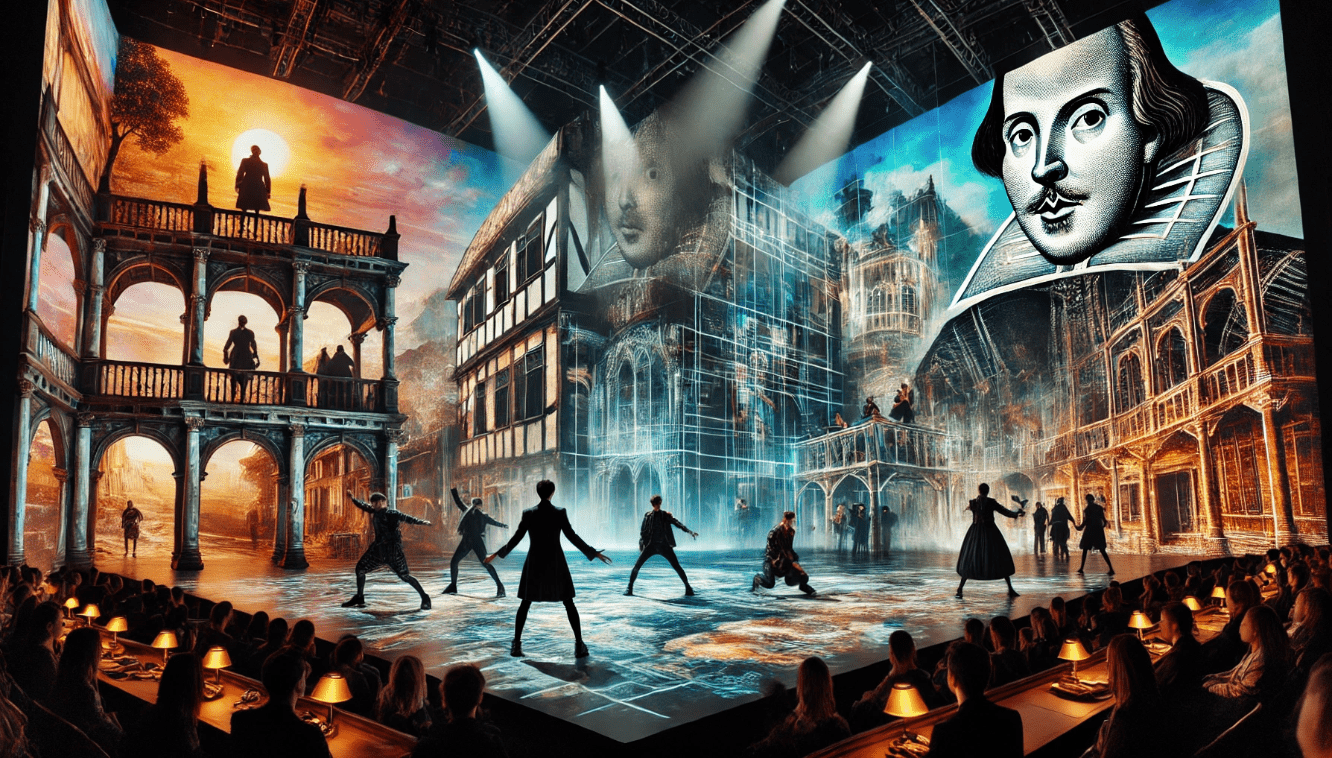
1. Shakespeare’s Influence on Contemporary Playwrights and Theater Innovators ✍️
Shakespeare’s innovative approach to storytelling, character development, and thematic depth is a constant inspiration for contemporary playwrights. Writers across the globe continue to adapt his timeless works or draw from his methods to create modern masterpieces.
- Modern Playwrights Taking Inspiration: Contemporary writers like Tom Stoppard (Rosencrantz and Guildenstern Are Dead), Lin-Manuel Miranda (Hamilton), and Tony Kushner (Angels in America) have incorporated Shakespeare’s influence into their own works. From intricate character studies to exploring universal themes, these writers use Shakespeare’s techniques while adding their own twists to reflect today’s world.
- Hybrid Genres and New Narratives: Modern plays now often mix traditional storytelling with modern elements, such as multimedia, spoken word, and digital technologies, all while maintaining the emotional depth and complexity of Shakespearean works. This fusion keeps his legacy relevant and offers fresh ways to experience his influence in theater.
2. The Evolution of Shakespeare’s Works in Modern Theater: What’s Next? 🔮
Shakespeare’s plays are constantly evolving. Directors and theater companies are always finding new ways to breathe life into his works, making them accessible and relevant for today’s audiences.
- Innovative Adaptations: The adaptation of Shakespeare’s work into modern settings has become a staple. Films like The Lion King (inspired by Hamlet) and 10 Things I Hate About You (based on The Taming of the Shrew) show how Shakespeare’s stories can transcend time, being set in everything from high schools to distant galaxies. Directors continue to experiment with location, context, and even language to make Shakespeare’s themes resonate with contemporary viewers.
- Immersive and Interactive Experiences: Immersive theater, where audiences interact with the performance, is gaining popularity. Productions like Sleep No More, which is inspired by Macbeth, involve the audience in a multi-sensory experience, taking them out of traditional theater spaces and allowing them to explore the world of Shakespeare’s characters in new and engaging ways. This evolution helps theater connect more deeply with audiences.
3. The Role of Technology in Shaping Shakespeare’s Legacy 💻
The digital age has opened up a whole new world for Shakespeare’s legacy, enabling his works to reach audiences in ways that would have been unimaginable in the past. Technology is allowing Shakespeare to evolve even further, bridging the gap between classic works and modern innovation.
- Virtual and Digital Performances: Online streaming platforms and digital performances have brought Shakespeare’s plays to a global audience. Productions are now streamed live, recorded, or even adapted into animated or virtual formats. Digital tools are expanding access to Shakespeare for anyone with an internet connection, regardless of location.
- AI and Shakespearean Playwriting: One of the most fascinating evolutions in Shakespeare’s legacy is the potential of artificial intelligence (AI) to generate Shakespearean-style works. AI can analyze Shakespeare’s plays and create new scripts that mimic his style, allowing future playwrights to experiment with AI-generated dialogue while maintaining the traditional essence of his work. Although still in its early stages, this innovation could transform how Shakespeare’s influence is carried forward.
4. Shakespeare’s Continued Relevance in the Age of Social Change 🗣️
Shakespeare’s works are uniquely adaptable to the cultural and political issues of each era. Today, as social issues like gender, race, and inequality take center stage, Shakespeare’s plays continue to be reinterpreted through these lenses.
- Addressing Contemporary Issues: Modern theater companies are reimagining Shakespeare’s works to address contemporary issues like gender inequality, racism, and LGBTQ+ rights. For instance, contemporary productions of Twelfth Night might feature gender-fluid or non-binary actors to explore the play’s themes of identity and self-discovery. These modern adaptations not only give Shakespeare’s plays a fresh perspective but also make them relevant to today’s societal challenges.
- Challenging Traditional Narratives: As social norms evolve, so do the ways in which Shakespeare’s stories are told. Directors and actors are now more willing to challenge the traditional gender roles and power structures seen in Shakespeare’s works. This allows for new interpretations that reflect the diverse world we live in, making Shakespeare’s legacy an ever-evolving dialogue about human experiences.
5: Practical Tips: How to Leverage Shakespeare’s Legacy in Today’s Theater
Shakespeare’s legacy is a powerful tool for playwrights, actors, and directors who want to create meaningful, engaging theater. Whether you’re writing a new play, preparing for a performance, or directing a show, there are several ways you can leverage Shakespeare’s timeless techniques to elevate your craft. Here are some practical tips to help you incorporate his influence into today’s theater. 🎭

1. Draw Inspiration from Shakespeare’s Universal Themes 🌍
One of the key reasons Shakespeare’s work still resonates is its focus on universal human experiences—love, betrayal, ambition, and more. To tap into this in your own work:
- Explore Deep Human Emotions: Whether you’re creating characters or writing dialogue, think about the emotions that drive people. Just like Shakespeare’s characters, make your characters’ motivations complex and multi-dimensional.
- Address Universal Themes: Themes like power, jealousy, and revenge are timeless. Try to incorporate these big ideas into your storylines to make them relatable to a wide audience.
2. Use Shakespeare’s Complex Characters for Depth 🎭
Shakespeare’s characters are not one-dimensional; they are layered, conflicted, and deeply human. To create characters with similar depth:
- Create Flawed Characters: Shakespeare’s characters, like Hamlet or Macbeth, are relatable because of their flaws. Build characters who struggle with internal conflict or whose actions are driven by contradictions. These characters will resonate with audiences.
- Use Soliloquies: Shakespeare’s soliloquies are a great way to reveal a character’s inner thoughts. Consider using monologues to help your characters express their deepest emotions or motivations, which can create a powerful connection with the audience.
3. Experiment with Shakespearean Story Structures 📚
Shakespeare’s five-act structure is a time-tested way to organize your story. While you don’t have to strictly follow this format, it’s helpful to keep it in mind when developing your plot:
- Set Up, Build, Resolve: Like Shakespeare’s plays, try creating a clear arc that includes a setup, rising action, climax, and resolution. This keeps your story structured while allowing room for emotional highs and lows.
- Incorporate Subplots: Shakespeare often used subplots to add layers to his stories. Consider weaving smaller, secondary storylines into your main plot for added complexity and depth.
4. Modernize Shakespeare’s Plays with New Contexts 📅
You don’t need to keep Shakespeare’s plays in their original setting to make them relevant. Many modern productions place his works in contemporary contexts or alternative settings, making them resonate with today’s audience:
- Adapt for Modern Times: Consider updating the setting of a Shakespearean play to reflect current issues or settings. For example, setting Macbeth in a corporate world or A Midsummer Night’s Dream in a contemporary urban environment can create new layers of meaning while maintaining the original themes.
- Address Modern Issues: Shakespeare’s plays often explore timeless themes like power, class, and gender. Feel free to adapt these ideas to explore contemporary issues, such as social justice or identity, to make Shakespeare’s work feel more relevant to today’s audiences.
5. Use Shakespeare’s Language and Wordplay to Add Depth 📝
Shakespeare’s command of language is unmatched, and his wordplay is one of the hallmarks of his work. To bring that same linguistic richness into your work:
- Play with Language: Just like Shakespeare, experiment with metaphors, puns, and double meanings in your writing. Wordplay can add layers to dialogue, making it more engaging and thought-provoking.
- Elevate the Dialogue: Shakespeare’s language isn’t just for drama—it’s about giving your characters a voice that reflects their inner world. Use elevated or poetic language to enhance character development and create memorable lines.
6. Embrace the Power of the Ensemble 🌟
Shakespeare’s plays often featured large, diverse casts that brought different perspectives to the table. In modern theater, you can leverage the ensemble to enhance your production:
- Collaborate with Your Cast: Shakespeare often created scenes where the interaction between characters was just as important as the individual performances. Encourage your actors to collaborate and build chemistry on stage for a more dynamic performance.
- Focus on Ensemble Energy: Whether you’re in a modern Shakespearean production or a new play, don’t forget the power of group dynamics. Use the energy of your cast to create moments of intensity, humor, and drama that engage the entire audience.
7. Take Risks and Be Bold 🚀
Shakespeare wasn’t afraid to take risks, whether by bending the rules of theater or by addressing controversial subjects. Modern theater should continue that tradition:
- Challenge Norms: Shakespeare often broke conventions of his time, whether in structure or content. Don’t be afraid to push boundaries in your own work, whether by experimenting with form, staging, or subject matter.
- Experiment with Staging: Many modern Shakespeare adaptations use creative staging techniques, like immersive theater or abstract set designs, to transform the audience’s experience. Think about how you can use space and design in innovative ways.
The Enduring Power of Shakespeare’s Theatrical Legacy
Shakespeare’s influence on theater is undeniable, and his legacy continues to shape the way we write, perform, and experience plays today. From his universal themes and complex characters to his innovative use of language and structure, Shakespeare’s works have provided a foundation for generations of playwrights, actors, and directors. 🎭
As we’ve explored, Shakespeare’s legacy isn’t static—it’s evolving and adapting to the needs and expectations of modern audiences. Whether through re-imagining his plays in contemporary settings, using technology to enhance performances, or drawing inspiration for new works, Shakespeare’s impact is as relevant today as it was centuries ago.
For anyone involved in theater—whether you’re a playwright, actor, director, or theater lover—understanding and embracing the evolution of Shakespeare’s theatrical legacy offers a powerful tool for creating impactful, timeless theater. As Shakespeare’s works continue to inspire and challenge us, they remain a testament to the enduring power of storytelling. 🌟
Frequently Asked Questions (FAQs)
1. How did Shakespeare’s works influence modern theater?
Shakespeare revolutionized theater with his complex characters, universal themes, and innovative storytelling techniques. Modern playwrights continue to draw inspiration from his use of structure, character depth, and language. His influence is seen in how contemporary plays tackle similar emotional conflicts and explore timeless themes like love, power, and identity.
2. Why are Shakespeare’s plays still relevant today?
Shakespeare’s plays remain relevant because they explore universal human experiences, such as love, jealousy, ambition, and betrayal, that still resonate with audiences. His characters are multi-dimensional and complex, reflecting the complexities of human nature, making them relatable across cultures and time periods.
3. How can modern theater adapt Shakespeare’s works for contemporary audiences?
Modern theater often adapts Shakespeare’s works by re-setting them in contemporary times or addressing current social issues. Directors may change the setting, costume design, or language while preserving the core themes, making the plays feel fresh and relevant for today’s audiences.
4. What impact has technology had on Shakespearean performances?
Technology has opened new possibilities for Shakespearean performances, from digital streaming of live shows to virtual reality adaptations. Modern productions use multimedia elements like projections, lighting, and sound to enhance storytelling, making Shakespeare’s plays more accessible and visually engaging for modern audiences.
5. How do Shakespeare’s themes influence modern playwrights?
Modern playwrights borrow from Shakespeare’s exploration of universal themes like love, betrayal, and revenge. These themes are timeless and continue to be relevant in exploring complex human emotions, often adapted to reflect current social issues, from gender roles to power dynamics.
6. Can Shakespeare’s language be difficult for modern audiences?
Shakespeare’s language can be challenging due to its old-fashioned vocabulary and intricate sentence structures. However, many modern adaptations simplify or reinterpret his language while keeping the essence of his work intact, making it more accessible to today’s audience.
7. Why are Shakespeare’s characters so important in modern theater?
Shakespeare’s characters are rich in psychological depth and complexity, often struggling with internal conflicts. Their multi-dimensional personalities inspire modern playwrights to create nuanced characters, encouraging actors to explore deeper emotional ranges and connect with the audience on a more profound level.
8. How can aspiring playwrights use Shakespeare’s techniques in their own work?
Aspiring playwrights can learn from Shakespeare by focusing on strong character development, using universal themes, and experimenting with complex language. His five-act structure and ability to blend comedy and tragedy also offer valuable lessons in creating engaging, dynamic plots and maintaining audience interest.
